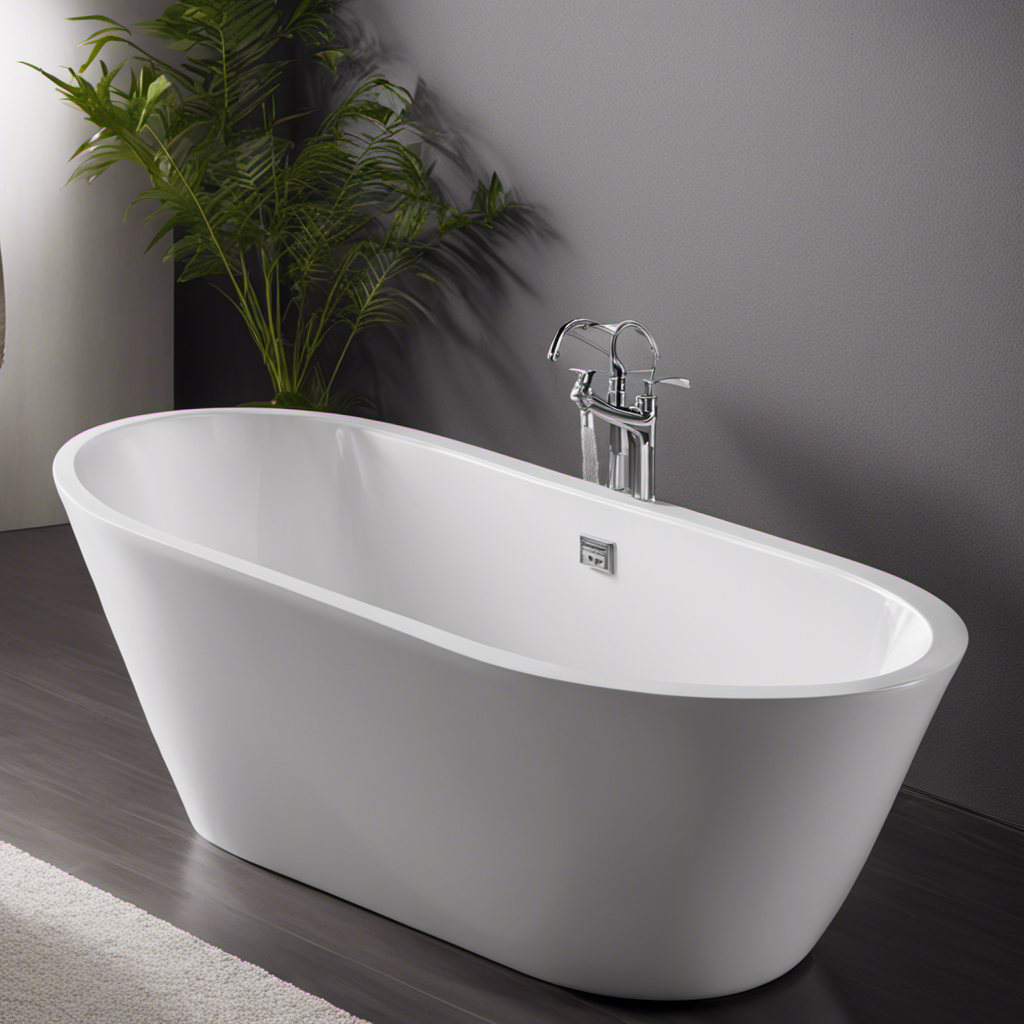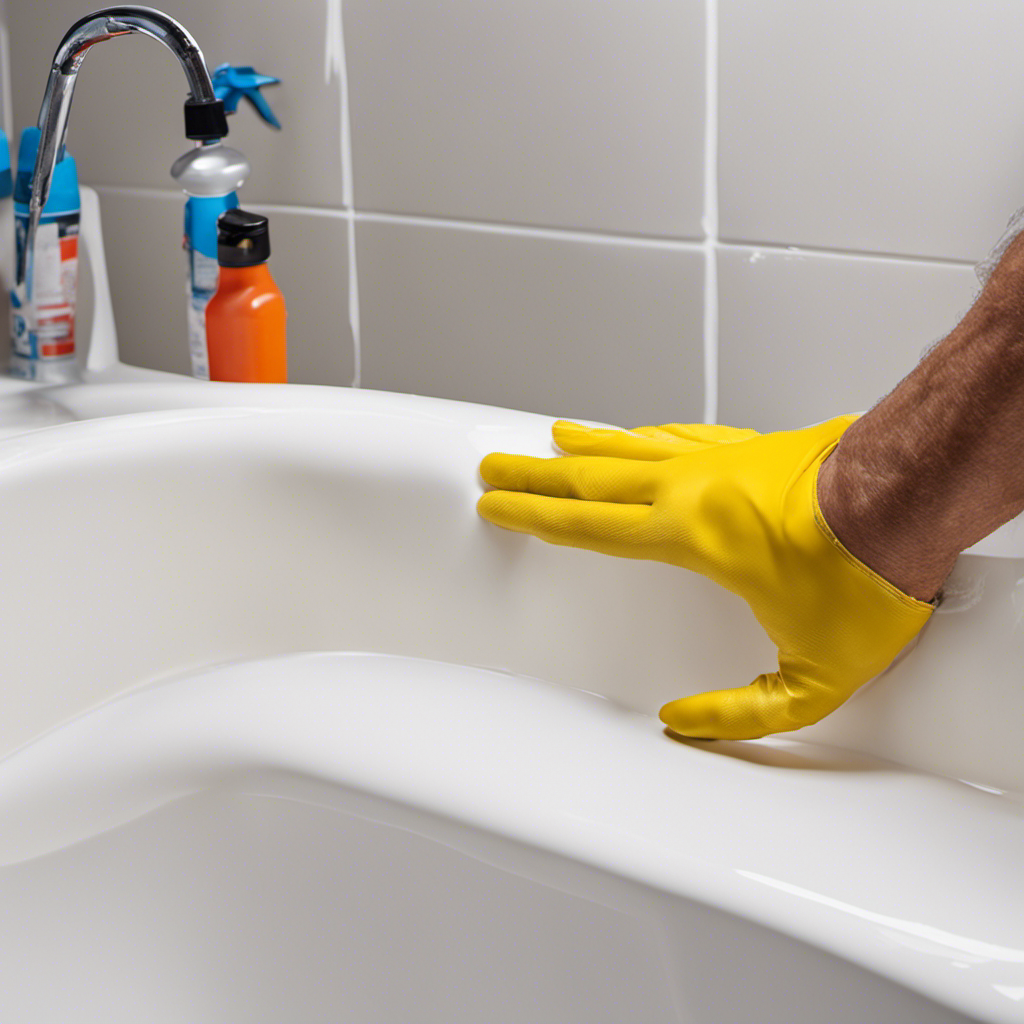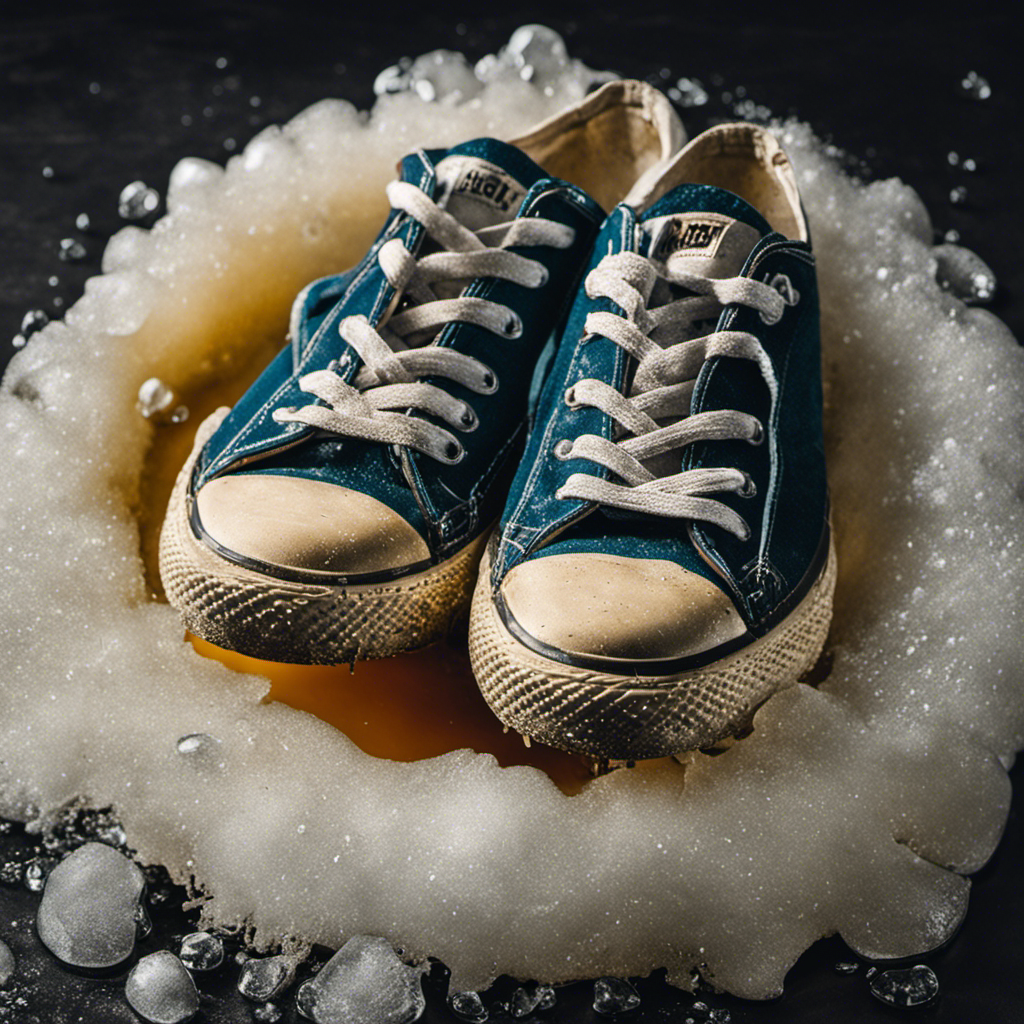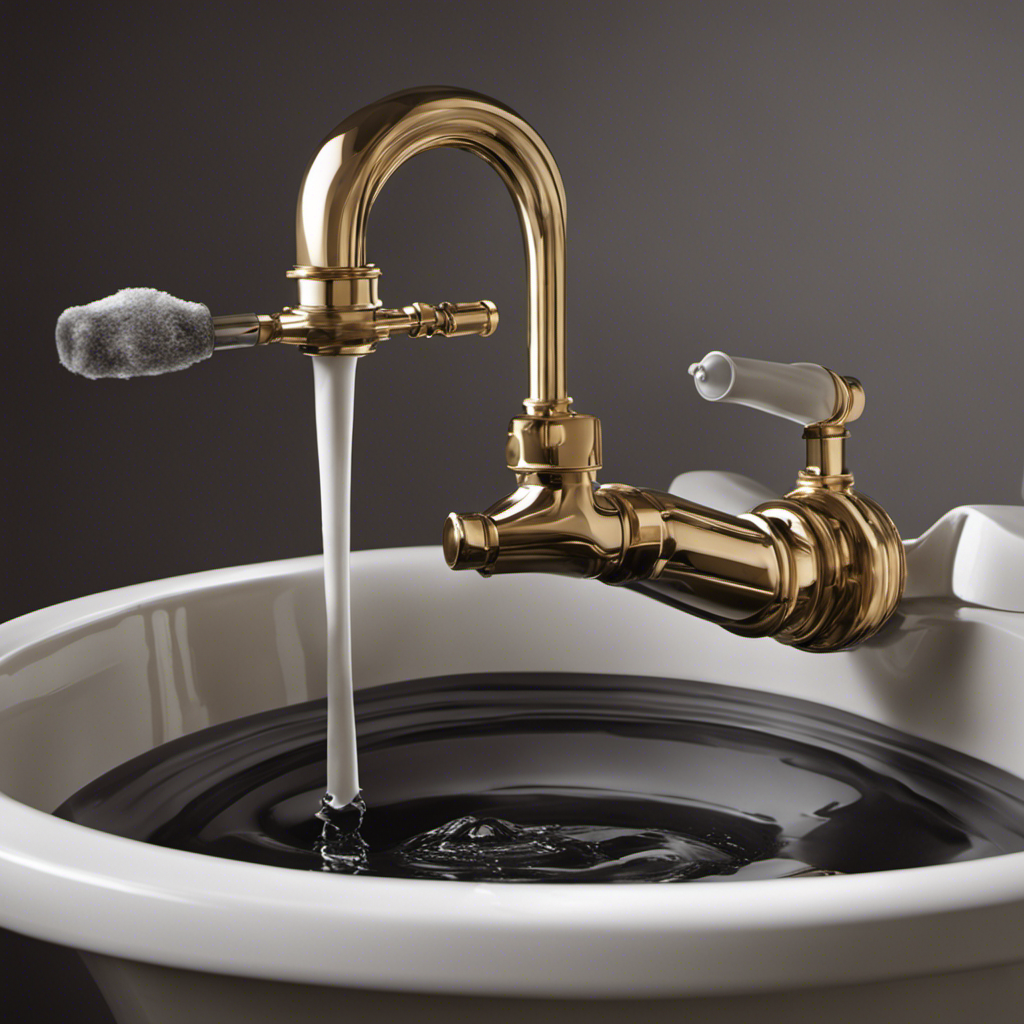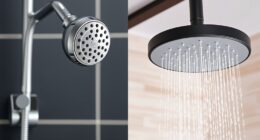Looking for the perfect caulk for your bathtub? Wondering which type will give you a tight seal and prevent leaks? Well, you’re in luck! In this article, we’ll guide you through the different types of caulk available for bathtubs and help you determine the best one for your needs.
Whether you’re a seasoned DIY enthusiast or a first-time caulk user, we’ve got you covered. So, let’s dive in and discover the secrets to a beautifully caulked bathtub.
Key Takeaways
- Silicone caulk is waterproof and flexible, creating a durable and long-lasting seal for bathtubs.
- Silicone caulk is resistant to mold and mildew growth, making it ideal for areas with temperature changes or vibrations.
- Acrylic tubs should be sealed with Acrylic Latex caulk, while fiberglass and porcelain tubs can be sealed with either Silicone or Latex caulk.
- Proper application and maintenance of caulk, including cleaning the surface and avoiding over-application, can ensure a professional finish and prolong the lifespan of the caulk.
Different Types of Caulk for Bathtubs
You should consider using silicone caulk for your bathtub because it is waterproof and flexible.
Silicone caulk is a popular choice for sealing and caulking bathtubs due to its excellent water resistance. It creates a durable and long-lasting seal that helps prevent leaks and water damage.
Unlike acrylic caulk, which can shrink and crack over time, silicone caulk remains flexible, allowing for natural movement of the bathtub without compromising the seal. This makes it ideal for areas that experience frequent temperature changes or vibrations.
Additionally, silicone caulk is resistant to mold and mildew growth, making it a hygienic choice for your bathroom.
Overall, silicone caulk provides superior protection and longevity, ensuring a watertight and secure seal for your bathtub.
Factors to Consider When Choosing Caulk for Bathtubs
When considering factors for choosing caulk for tubs, it’s important to keep in mind the type of material the tub is made of. The type of caulk you choose should be compatible with the tub material to ensure a proper seal.
Before applying new caulk, it’s crucial to remove the old caulk completely. Proper caulk removal is important because it allows the new caulk to adhere better and prevents any potential issues in the future.
One common mistake to avoid when caulking bathtubs is not cleaning the surface properly before applying the new caulk. Make sure to remove any dirt, grime, or soap residue from the tub surface to ensure a strong bond between the caulk and the tub.
Another mistake is applying too much caulk, which can lead to messy and uneven lines. It’s important to apply a thin and even bead of caulk for a professional finish.
How to Determine the Best Caulk for Your Bathtub
To determine the best caulk for your tub, it’s essential to consider the specific material of your bathtub. Different types of caulk are suitable for different materials, such as acrylic, fiberglass, or porcelain. Here is a table that summarizes the recommended caulk types for various bathtub materials:
| Bathtub Material | Recommended Caulk Type |
|---|---|
| Acrylic | Acrylic Latex |
| Fiberglass | Silicone |
| Porcelain | Silicone or Latex |
When it comes to removing old caulk, there are several techniques you can use. You can start by scoring the caulk with a utility knife and then use a caulk removal tool or a putty knife to peel it away. Alternatively, you can use a caulk softener or a heat gun to make the caulk easier to remove. Remember to thoroughly clean and dry the area before applying new caulk to ensure a proper seal.
Step-by-Step Guide for Applying Caulk to Your Bathtub
After thoroughly cleaning and drying the area, it’s time to apply the caulk to your tub in a smooth and even manner. Follow these steps to ensure a successful application:
- Prepare the caulk gun by cutting the tip of the caulk tube at a 45-degree angle.
- Apply a thin and continuous bead of caulk along the joint between the bathtub and the surrounding surface.
- Use a caulk smoothing tool or your finger to create a neat and even finish.
Avoid over-applying caulk as it can lead to a messy appearance and difficulty in achieving a smooth finish. Make sure to work quickly as caulk starts to dry and form a skin within minutes. Clean up any excess caulk immediately with a damp cloth or sponge.
Allow the caulk to cure for at least 24 hours before using the bathtub.
Tips and Tricks for Maintaining Caulk in Your Bathtub
One way you can maintain the caulk in your tub is by regularly inspecting it for any signs of wear or damage. Caulk that is cracked or peeling should be removed and replaced to prevent water damage and the growth of mold and mildew. To help you better understand the importance of maintaining your bathtub caulk, here are some caulk removal techniques and tips for preventing mold and mildew:
| Caulk Removal Techniques | Preventing Mold and Mildew |
|---|---|
| Use a caulk removal tool or a utility knife to carefully remove the old caulk. | After removing the old caulk, thoroughly clean the area with a mildew cleaner. |
| Make sure to remove all traces of the old caulk before applying new caulk. | Allow the area to completely dry before applying new caulk. |
| Apply a silicone-based caulk for better durability and resistance to mold and mildew. | Regularly clean and dry your bathtub to prevent moisture buildup. |
| Smooth the caulk with a caulk finishing tool or your finger for a professional look. | Use a squeegee or towel to remove excess water after each use. |
| Regularly inspect the caulk for any signs of wear or damage and replace as needed. | Use a bathroom fan or open a window to reduce humidity in the bathroom. |
Frequently Asked Questions
Can I Use Regular Caulk for My Bathtub?
You can use regular caulk for your bathtub, but there are other alternatives available. Consider the pros and cons of different types of caulk, such as silicone or acrylic, to make an informed decision.
How Long Does Caulk Typically Last in a Bathtub?
Bathtub caulk maintenance is key to ensure its longevity. On average, caulk typically lasts around 5-10 years. Signs of caulk deterioration include cracking, peeling, or mold growth. Regularly inspect and replace caulk as needed.
Is It Necessary to Remove Old Caulk Before Applying a New One?
Before applying new caulk to your bathtub, it is necessary to remove the old caulk. Removing old caulk has several benefits, including ensuring a proper seal and preventing mold and mildew growth.
Can I Use Caulk to Fix a Crack in My Bathtub?
You can definitely use caulk to fix a crack in your bathtub. However, it’s important to note that there are alternative solutions available depending on the severity of the crack.
What Should I Do if the Caulk in My Bathtub Starts to Peel or Crack?
If the caulk in your bathtub starts to peel or crack, you should first properly prepare the surface by removing the old caulk. Then, choose the right caulk for your bathtub based on its material and the type of caulk recommended.
Conclusion
So there you have it, the different types of caulk for your bathtub.
Now, you may think that choosing the right caulk is a simple task, but trust me, it’s not as easy as it seems.
It’s like trying to find a needle in a haystack, or a diamond in the rough.
But fear not, with the right knowledge and careful consideration, you can find the perfect caulk for your bathtub.
So go forth, my friend, and may your caulk be long-lasting and watertight.
